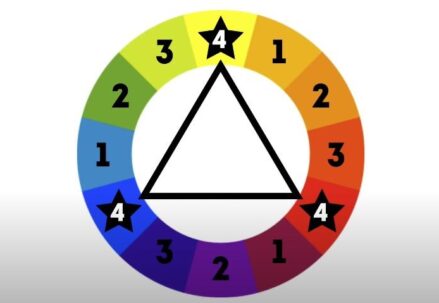Graphic design and UX (User Experience) design are two prominent areas in the dynamic field of design. Although these disciplines are frequently brought up together, they really have their own unique identities, approaches, and goals. By delving into the similarities and differences between graphic design and user experience design, as well as how the two fields might work together, this essay gets to the meat of the argument. This exploration delves into the core concepts, interactions, and shaping of the digital world we inhabit on a daily basis, from graphic design to user experience design.
The Essence of Graphic Design and UX Design
| Field | Description |
| Graphic Design | Graphic design is mostly about creating visually appealing messages. It entails making pictures to say things. Graph designers create eye-catching and captivating designs by manipulating typefaces, colors, images, and shapes. Artistic expression and aesthetic appeal are the foundations of this field, which aims to convey a message or make an impression visually. |
| UX Design | User experience design, in contrast, is all on making things that people can really use and enjoy. All parts of the product’s acquisition and integration process, including its branding, design, usability, and functionality, are part of this. To make sure goods are fun to use as well as functional, user experience design considers the full user journey, not just the visual parts. |
Graphic Design vs UX Design: The Main Differences
Both graphic design and user experience design are essential parts of the design ecosystem, yet they approach their work in very different ways. Everyone involved in the industry, from students to clients, must have a firm grasp of these distinctions.
Objectives
Aesthetics and visual appeal are the primary concerns of graphic designers. The goal is to convey ideas or feelings through eye-catching graphics that people can’t help but notice. Many other types of projects fall under this category, including logos, brochures, and ads. The main goal is to create works that are aesthetically pleasing and effectively communicate the intended message.
By contrast, user experience design goes beyond mere aesthetics to enhance the usefulness, accessibility, and overall quality of an item or service’s interaction with its intended audience. Designing with the user’s experience and interaction in mind, we prioritize straightforward and simple interfaces that make the whole process easy and intuitive.
Process
diverse goals necessitate diverse approaches in graphic design and user experience design.
| Aspect | Graphic Design | UX Design |
| Focus | Creative brainstorming and visual composition | Research, user testing, and prototyping |
| Techniques | Sketching, applying design principles | Iterative design, focusing on user feedback |
| Tools | Design software for creating visual elements | Prototyping tools, user research methods |
| End Goal | Aesthetically pleasing and message-driven design | Functional and user-friendly product or service |
Outcomes
The results in each area are indicative of the methods and interests that went into them:
- Static designs like logos, brochures, and ads are the usual output of graphic design. The emphasis here is on the visual appeal and the message delivery of these individual pieces;
- With a strong focus on the user’s journey and interaction, UX Design creates useful products or services. The end result is a product that not only looks well, but also functions well and feels good to the user, guaranteeing an effective and pleasant experience.
The Intersection of Graphic Design and UX Design
Despite their apparent differences, graphic design and UX (User Experience) design really share many commonalities. Actually, when used together, they form a whole that is both thorough and efficient when designing digital products and user interfaces. Products that are both aesthetically pleasing and extremely functional are the result of a well-balanced approach to graphic design and user experience design.
Graphic Design’s Role in UX Design
Improving a product’s usability and, by extension, the user experience, is where graphic design really shines. Some ways in which GD impacts UX design are as follows:
- Visual Appeal: The primary goal of graphic design is to provide visually appealing visuals through the use of color schemes, typography, and layouts. People are more likely to interact with a product if they find its interface aesthetically pleasing;
- Consistency: A product’s visual language should be consistent, and graphic designers make sure of that. Users are better able to grasp the interface and its features when design components like buttons, icons, and typefaces are consistent;
- Information Hierarchy: Graphic designers help consumers focus on what’s most important by using visual hierarchy. Users will have an easier time navigating the interface and finding what they’re looking for as a result;
- Branding: Graphic designers are vital in branding because they create visual representations of a company’s identity. Users are more likely to remember and trust a business with a strong visual identity.
Transitioning from Graphic Design to UX Design

Many graphic designers are interested in user experience (UX) design because of the direct impact that design decisions have on product usability. Transitioning from graphic design to UX design is a complex process that demands meticulous preparation and execution:
Learning UX Principles
- Understanding User-Centered Design: Put the requirements and desires of the user first, rather than aesthetics;
- Usability: Become acquainted with the principles that contribute to the user-friendliness and efficiency of products;
- Interaction Design: Master the art of making user interfaces that let people engage with them easily.
Acquiring New Skills
- Wireframing: Develop the skill to create low-fidelity representations of interfaces;
- Prototyping: Create interactive prototypes to test and refine design concepts;
- User Research: Understand various research methods to gather insights into user behavior and preferences.
Applying Design Thinking
- Embrace a user-centric approach to problem-solving. Identify and address user pain points and challenges through empathy and creativity.
UX vs Graphic Design: Skills and Tools
Let’s delve deeper into the specific skills and tools required for each discipline:
Graphic Design Skills and Tools
| Skill/Tool | Description |
| Adobe Creative Suite (e.g., Photoshop, Illustrator, InDesign) | Ability to create graphics and layouts using industry-standard design software. |
| Typography, Color Theory, Layout Design | A solid grasp of color theory, layout concepts, and typography to produce aesthetically pleasing designs. |
| Creativity and Artistic Ability | Having the creative capacity to come up with novel, visually beautiful ideas. |
UX Design Skills and Tools
| Skill/Tool | Description |
| Prototyping Tools (e.g., Sketch, Adobe XD, Figma) | Competence with tools for making interactive prototypes for the purpose of testing and refining ideas. |
| User Research and Usability Testing | Proficiency in usability testing and user research methodologies for information gathering and design effectiveness evaluation. |
| Wireframing and Creating User Personas | Ability to shape design choices through the creation of user personas and wireframes (skeleton layouts). |
Real-World Application: Graphic Design vs UX Design
Websites benefit from the complementary skillsets of both fields, which allow for an elegant union of form and function. In order to better understand the value of visual and UX design, let’s explore some of their practical uses:
Graphic Design
- Visual Engagement: Graphic designers are in charge of making a website’s visual components interesting and eye-catching. Crafting layouts, choosing font, and developing graphics that capture the eye are all part of this;
- Cohesive Color Schemes: They carefully select color palettes that communicate particular feelings or are in line with the brand’s identity, resulting in a cohesive and visually beautiful user experience.
- Brand Representation: Graphic designers make sure that brands are consistently and easily recognized online by adding logos and images that are particular to the company into the design;
- Typography Selection: Careful consideration of typefaces and typographic hierarchy improves legibility and aesthetics.
UX Design
- User-Friendliness: User experience designers put the user first by creating websites with simple, straightforward navigation systems that people can utilize to locate what they need and get things done;
- Information Architecture: They plan the site’s data architecture, making sensible divisions and classifications to facilitate easy navigation and content discovery;
- Efficient Interactions: User experience designers strive to make user interactions, including form submissions or checkout processes, as efficient and painless as possible;
- User Testing: By implementing usability testing and collecting feedback from users, UX designers ensure that the website’s functioning is constantly improved to match the changing demands and expectations of its audience.
Conclusion
Two separate yet related domains are illustrated by the contrast between graphic design and UX design. The emphasis of UX design is on the practicality and ease of use, as opposed to graphic design’s emphasis on aesthetics and visual communication. By transitioning from graphic design to user experience design, experts can broaden their influence beyond only making aesthetically pleasing designs to crafting user-resonant experiences. Each area is vital on its own, but when they work together, we can make products that are both innovative and easy to use.
FAQ
Can an illustrator transition into user experience design?
If they put in the time and effort to learn the ropes, graphic designers can definitely become user experience designers.
Does a user experience designer earn more than a graphic designer?
Because their work is so technically and research-based, user experience designers should expect a better compensation than average.
Does knowledge of programming be required of UX designers?
Although it is not required, it can be advantageous for UX designers to have some knowledge of programming.
Do you think user experience design and graphic design are more creative than one another?
While both graphic design and user experience design demand imagination, the former is primarily concerned with visual expression and the latter with innovative approaches to solving problems.




